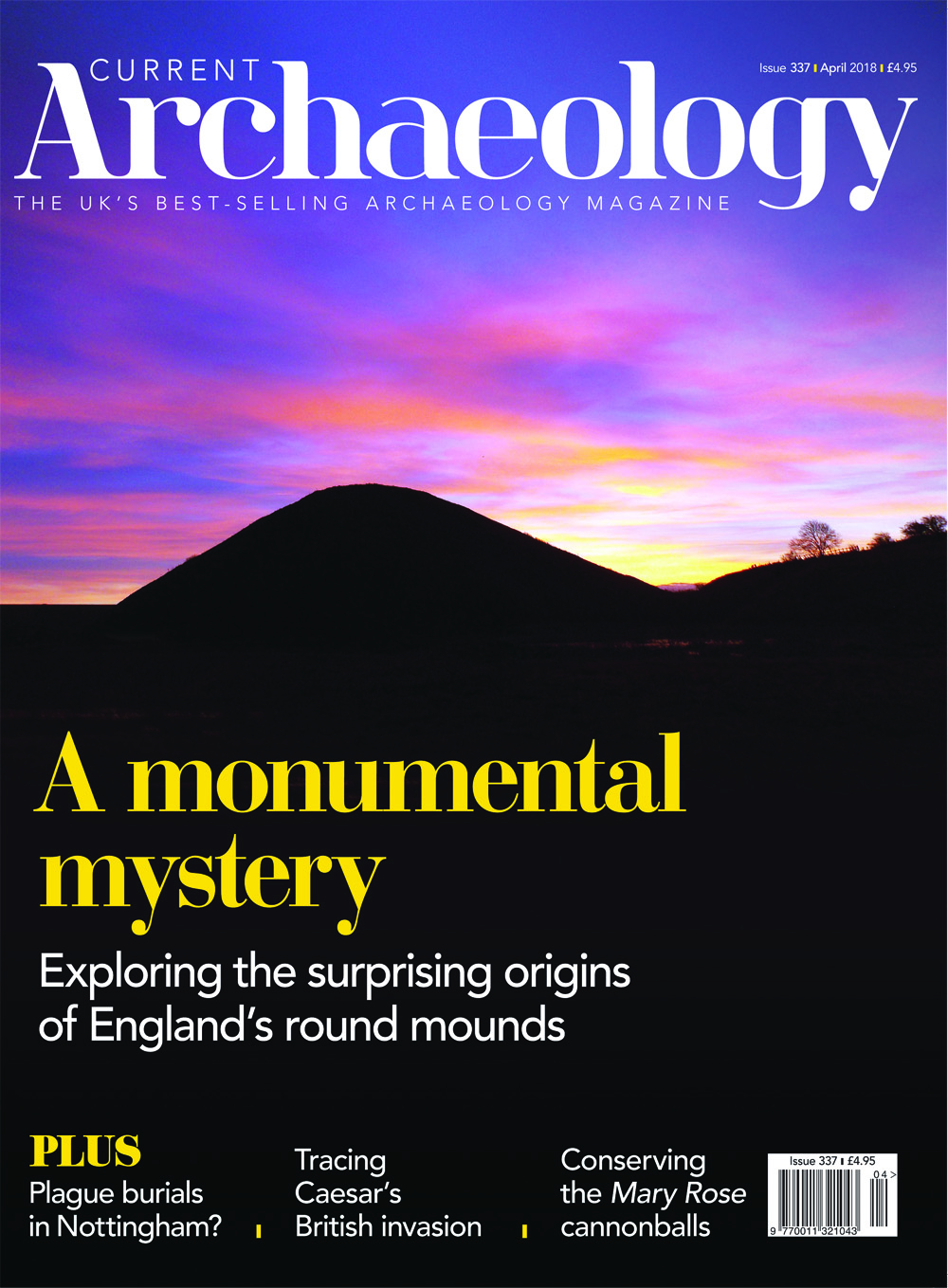Scattered across England, a host of monumental mounds have long been interpreted as Norman castle mottes. Large round mounds boast a much earlier pedigree, however – as this month’s cover star, Silbury Hill, attests. A recent project has been investigating whether any sisters to Silbury are hiding in plain sight – with some surprising results.
Equally sensational, to the Romans, were Caesar’s invasions of Britain in 55 and 54 BC, which carried him and his soldiers beyond what Rome saw as the known world. The resulting peace settlement bound Britain to the Roman Empire. Now hints of the spot where these game-changing events began are emerging.
It was another watershed change that led to the birth of Nonconformist Christian groups in this country; we explore the artistic and architectural legacy of their diverse places of worship. There was no religious building associated with a series of hurried burials excavated outside Nottingham’s medieval defences, though. Do the bones of two of those interred there preserve evidence of plague? Finally, we learn how cutting-edge techniques are helping to conserve cannonballs from Henry VIII’s flagship, the Mary Rose.
Returning to our cover – or, rather, to the wider Stonehenge landscape in which Silbury Hill sits – debate continues about plans for the Stonehenge tunnel. While some heritage bodies see the latest scheme as a happy compromise, other archaeologists – not least those working at Blick Mead, 2018’s CA Research Project of the Year – have raised concerns about the impact on the historic environment. A public consultation runs until 6 April; you can read more about the plans and add your voice to the discussion at https://highwaysengland.citizenspace.com/he/a303-stonehenge-2018/.
Carly Hilts
IN THIS ISSUE:/n
FEATURES/n
NORMAL FOR NORMANS?/n
Exploring the large round mounds of England
It has long been taken for granted that many of the country’s monumental mounds are Norman castle mottes. But after it was revealed that the Marlborough Mound in Wiltshire was originally a Neolithic construction, questions were raised about whether more mounds could have prehistoric roots. After extensive analysis, the results are in – and there are surprises in store.
EBBSFLEET, 54 BC/n
Searching for the launch site of Caesar’s British invasions
Could the discovery of a large and unusual defensive ditch at Ebbsfleet, dating from the 1st century BC, together with part of a Roman spear, provide a tangible link to Julius Caesar’s invasions of Britain? We explore the evidence.
HIDDEN HOUSES OF WORSHIP/n
Discovering the development of England’s Nonconformist chapels
Members of Nonconformist Christian groups faced periods of intense persecution within these shores, but their diverse and innovative places of worship have left a rich, if academically underappreciated, architectural legacy. A new study sets out to illuminate these buildings, and to showcase their history to non-congregants.
THE CRANBROOK CONUNDRUM/n
Investigating a possible plague burial ground in Nottingham
For the better part of a century, mystery has surrounded a number of skeletons found hurriedly buried at Cranbrook Street, outside Nottingham’s medieval defences. Now, through ancient DNA, isotope, and radiocarbon analysis, the origin – and possible fate – of two of these individuals has been revealed.
A SHOT AT CONSERVATION/n
Using the latest technology to save theMary Rose’s cannonballs
Over 1,200 iron cannonballs were excavated from the wreck of the Mary Rose, but many are slowly crumbling away with corrosion. Unless a successful conservation technique is discovered, these important artefacts could be lost forever. Can cutting-edge techniques offer a solution – and can destructive testing be justified in the pursuit of this aim?
NEWS/n
Face to face with Cheddar Man; Could squirrels have contributed to the spread of leprosy in Great Britain?; Measuring Mesolithic (artistic) media; Bronze Age barrow cemetery revealed in Hampshire; Setting the stage at Shakespeare’s Curtain Theatre; Science notes; New Treasure finds from North-east Wales; Finds tray
REGULARS/n
Comment
Joe Flatman excavates theCAarchive
Context
Room with a view: The Knave, Swansea
Reviews
Winchester: an archaeological assessment – St Swithun’s ‘City of Happiness and Good Fortune’; Water and theEnvironment in the Anglo-Saxon World; A Gazetteer of Anglo-Saxon & Anglo-Scandinavian Sites: Cambridgeshire & Northamptonshire; Humble Works for Humble People: a history of the fishery piers of County Galway and North Clare, 1800-1922; The Western Cemetery of Roman Cirencester, 2011-2015; Early Bronze Age Round Barrows of the Anglo-Welsh Border
Exhibition
China’s First Emperor and the Terracotta Warriors at the World Museum, Liverpool
Calendar
Our selection of exhibitions and events
Sherds
Chris Catling’s irreverent take onheritage issues
Odd Socs
The Stretcher Railing Society

